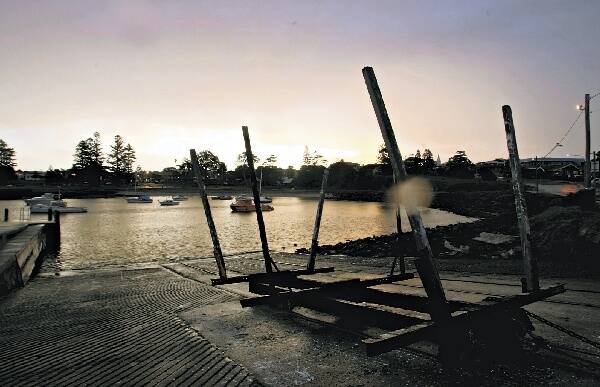The apocalyptic red haze that descended on the Illawarra was the worst dust bombardment seen in the state for nearly 70 years."It will go down as one of the worst dust storms in history in Sydney and the Wollongong area," said Barry Hanstrum of the Bureau of Meteorology."There is very little precedent for this sort of thing."
SLIDESHOW: Mercury photographers capture the dust storm YOUR PICTURES: Slideshow of Mercury readers' photos Dust storm: The end of the world and other vivid explanations By 8am, the air particle reading in Wollongong was through the roof at nearly 500 times the usual pollution level.On a clear day you could expect to see a reading of 20 micrograms of particles per cubic metre in the atmosphere, and 500 micrograms during a bad bushfire.Yesterday, Wollongong inhaled 9576 micrograms of dust particles per cubic metre.It was by far the worst particle reading residents have seen since monitoring began in the 1970s.The combined effects of the drought and gale force winds whipped up dust from inland Australia and swept it across to the coast.The dust stretched 600km along the NSW coast from the South Coast to the Queensland border, dumping up to 75,000 tonnes of dust an hour into the Tasman Sea. The Bureau of Meteorology said the dust might even make it to New Zealand. Poor visibility wreaked havoc, grounding planes at Sydney Airport and Illawarra Regional Airport. At Port Kembla, the harbour master delayed entry to a coal ship for four hours.The red glow created a headache for Illawarra emergency services with the NSW Fire Brigade receiving an unusually high number of calls in the morning.Inspector Brendan Cox said many people initially assumed they were witnessing a bushfire when they looked outside."Also automatic fire alarms were being set off by the dust," he said.Paramedics were run off their feet with a 10 per cent increase in the number of patients needing to be taken to hospital with respiratory illnesses caused by the dust.Health authorities warned anyone with asthma or other respiratory conditions to remain indoors. The director of the Centre for Asthma, Allergy and Respiratory Research at the University of Western Australia, Dr Phillip Thompson, said dust storms were particularly hazardous for anyone with chronic lung disease or sinus disease."Once the particles per cubic metre are above 300, dust storms pose a risk to lung health," he said.Although the region's school's remained open, children were kept indoors and were told to do as little physical activity as possible.Strong winds which brought the dust to the region had settled down by mid-afternoon, but not before ripping the roof from a TNT truck on Springhill Rd, Port Kembla.The State Emergency Service in Wollongong had 40 calls for assistance through the day including trees toppling over or losing limbs, a shed collapsing at Dapto and power lines down at Oak Flats.


